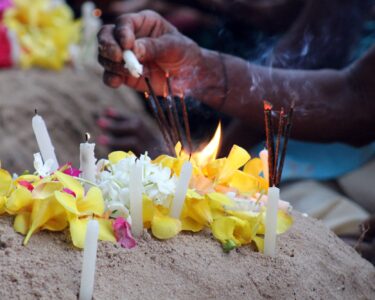According to the Airline Pilots’ Guild of Sri Lanka (ALPGSL) a staggering shift of almost 70 pilots to rival airlines underscores the gravity of the situation.
An official representing the ALPGSL union said that approximately 12 pilots have submitted resignations and opted to fulfill their obligatory three-month notice periods.
Meanwhile, overseas demand results in 25% reduction in Sri Lankan Airlines aircraft engineers.
The Association of Sri Lankan Airlines Licensed Aircraft Engineers (ALAE) revealed an unprecedented demand for skilled professionals from Sri Lanka abroad, resulting in a significant exodus from ALAE’S workforce.
This exodus has led to a 25% reduction in ALAE’S workforce in recent months, and the association anticipates further turnover of engineers due to the ongoing global demand.
The ALAE has called on the stakeholders involved in the management of the national carrier to collaborate on a workable retention plan.
“It was essential to address the current exodus of skilled professionals to ensure top-notch aircraft maintenance and safety for Sri Lankan Airlines passengers,” the ALAE said in a statement.
“The current surge in global travel has created an unprecedented demand for our skilled professionals, resulting in advantageous job opportunities abroad. Regrettably, this has led to a significant exodus from our community.
The ALAE has experienced a 25% reduction in its workforce in recent months and anticipates a further turnover of engineers with the current global demand.this is creating a massive shortage of licensed aircraft engineers needed to run the increasing operations of Sri Lankan Airlines.”
“In the event of skilled and experienced engineer shortage, we will witness that the company will have to send some of our aircraft to external Maintenance and Repair Organizations (MROS) for major technical checks, which we have been performing in-house up to now.
This will result in millions of dollars moving out of the country as payment for those MROS, when we are already facing a dollar crisis” . Further to that, we have no assurance that they will deliver the same 7-star safety standards as we do.
Meanwhile, Sri Lankan pilots have raised alarm bells about a series of issues that are not only impacting job satisfaction but also potentially compromising the safety of flights.
Pilots complain that this mass exodus has placed existing pilots under immense pressure, with extended working hours becoming the norm.
We are stressed due to heavy workloads. Hiring foreign pilots is not an option for Sri Lankans due to high costs. As they don’t hire new pilots, the ones who are working now are working around the clock. A representative said
In recent times, the skies above Sri Lankan Airlines, the flagship carrier of Sri Lanka, have been overshadowed by mounting concerns raised by engineers, pilots, and their respective unions, painting a grim picture of the airline’s operational stability.
The Alarm:
The Airline Pilots’ Guild of Sri Lanka (ALPGSL) has sounded the alarm, revealing a staggering exodus of nearly 70 pilots to rival airlines and highlighting the severity of the situation. An official from ALPGSL disclosed that approximately 12 pilots have submitted resignations, opting to adhere to the mandatory three-month notice periods.
Simultaneously, the global demand for aviation expertise has led to a substantial 25% reduction in the number of aircraft engineers at Sri Lanka Airlines. The Association of Sri Lanka Airlines Licensed Aircraft Engineers (ALAE) disclosed that an unprecedented demand for skilled professionals from Sri Lanka abroad has resulted in a significant departure from their workforce.
Acknowledging the gravity of this workforce reduction, the ALAE has called upon the relevant stakeholders involved in managing the national carrier to collaborate on a viable retention plan. The union emphasized the need to address the current exodus to ensure the provision of top-notch aircraft maintenance and safety for Sri Lankan Airlines passengers.
The surge in global travel has created unparalleled opportunities for skilled professionals abroad, leading to an unfortunate drain of talent from Sri Lankan Airlines. The ALAE has already witnessed a 25% reduction in its workforce and anticipates further turnovers due to the ongoing global demand, exacerbating the shortage of licensed aircraft engineers required to sustain the expanding operations of the airline.
In the face of a potential shortage of skilled and experienced engineers, Sri Lankan Airlines may be compelled to send its aircraft to external Maintenance and Repair Organizations (MROS) for major technical checks, a function previously performed in-house. This would result in a substantial outflow of millions of dollars from the country, aggravating the existing dollar crisis, with no assurance that external entities would maintain the same 7-star safety standards upheld by Sri Lankan Airlines.
Meanwhile, pilots at Sri Lankan have raised concerns about various issues impacting job satisfaction and potentially compromising flight safety. The mass exodus of personnel has created a stressful environment for existing pilots, leading to extended working hours becoming the norm. The ALPGSL representative emphasized that hiring foreign pilots is not a feasible option due to the associated high costs, leaving the current workforce stretched to the limits as they tirelessly manage increased workloads.







